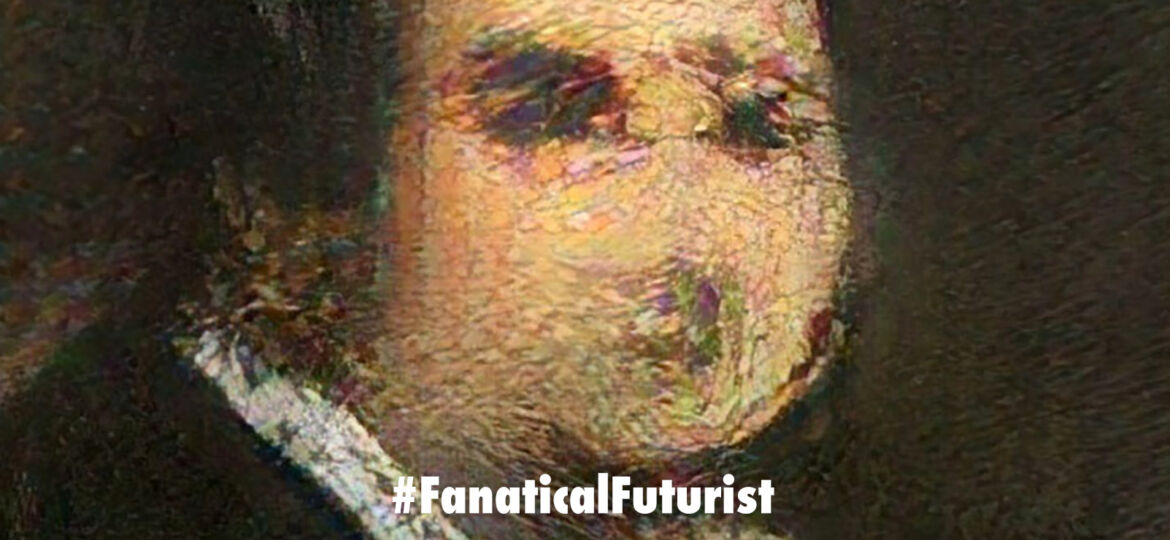
WHY THIS MATTERS IN BRIEF
We’re told that machines can’t be creative, at least in the human sense, but nevertheless they can still “create” art – and sell it.
A few months ago I wrote an article about a Google backed Artificial Intelligence (AI) based out of Germany that was creating its own paintings in the theme of the old masters, and at the time, and over a dinner conversation with the Minister for Education for the UAE while we were discussing the rise of creative AI’s and their impact on future jobs and skills, I predicted that it wouldn’t be long before we saw AI created art going up for auction. And now that day has come and it signals the beginning of a new era in the art world, a one where man and machines increasingly co-exist alongside each other.
“Edmond de Belamy, from La Famille de Belamy” is no ordinary piece of art. It’s the first portrait created by an AI algorithm to be sold by Christies, a major auction house. Originally Christie’s expected the AI’s “master piece” to fetch $7,000 to $10,000, but last Thursday it sold for a staggering $432,500 – over 40 times the initial estimate – to an anonymous bidder.

Priceless…?
The portrait was made using traditional materials including ink and canvas by an AI algorithm, with no help from humans, and in keeping with the artists background it was signed with a maths equation.
“We gave the algorithm 15,000 portraits and the algorithm understands what the rules of the portraits are, and [created] another one,” said Pierre Fautrel, co-founder of Obvious, the art collective that created the AI that created the work.
The goal of the painting and the Obvious art collective was to prove that “AI can do more than operate driverless cars or transform manufacturing – it can be creative,” again, a trend I’ve discussed and presented on at length for some time now as we continue to see the emergence of increasingly creative and innovative AI’s that can make everything from art, fake celebrities, music, and videos, to Under Armour trainers and even self-evolving robots.
Portraiture is a tough genre for AI to take on though according to Christie’s “since humans are highly attuned to the curves and complexities of a face in a way that a machine cannot be.”
This difficulty was part of Obvious’ thinking when they created the portrait.
“We did some work with nudes and landscapes, and we also tried feeding the algorithm sets of works by famous painters. But we found that portraits provided the best way to illustrate our point, which is that algorithms are able to emulate creativity,” said Fautrel.
“Edmond de Belamy” is one of 11 AI paintings made by Obvious, and while the remaining paintings might not sell for the same amount as the first one, one thing is for certain – this won’t be the last AI created art work to be sold at auction, or elsewhere. But as more AI’s churn out more creations at some point there will be questions that need to be answered such as who owns the art and the algorithm’s IP, do the artists whose work was used to train the AI get a cut, and then the biggie – do the AI’s creators “kill it” in order to boost a piece of works re-sell value? We’re at the entrance to the rabbit hole, let’s go in…
















[…] them on demand, seems increasingly quaint and outdated. And, up until recently artwork, even art made by Artificial Intelligence (AI) programs, has been largely immune from this shift with collectors […]